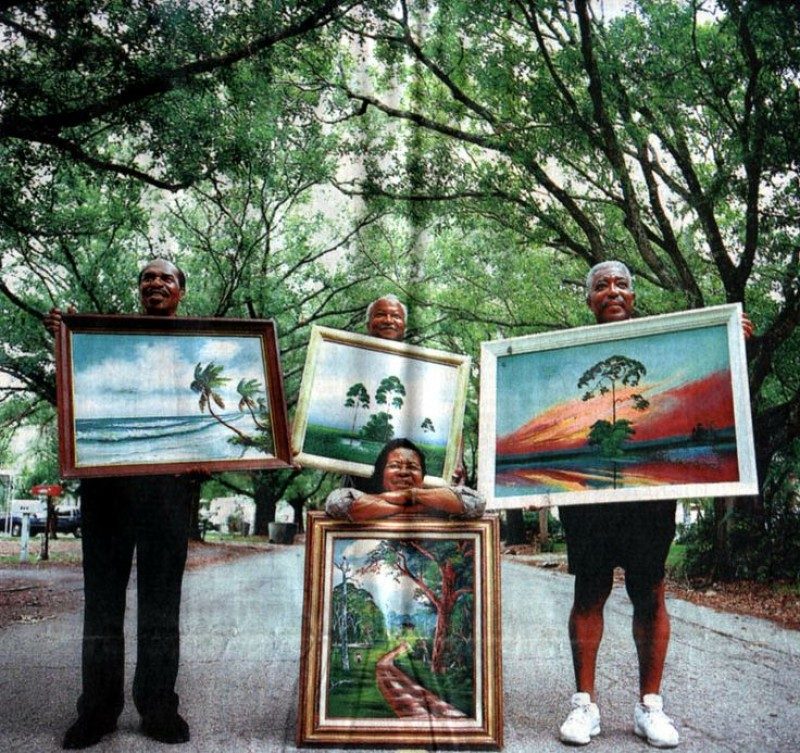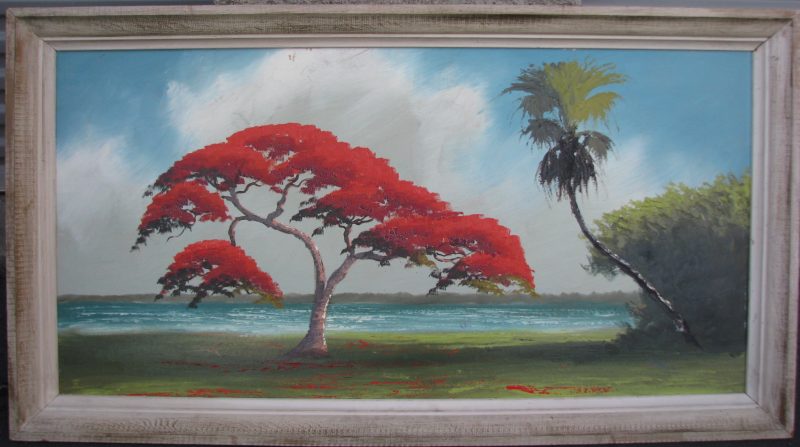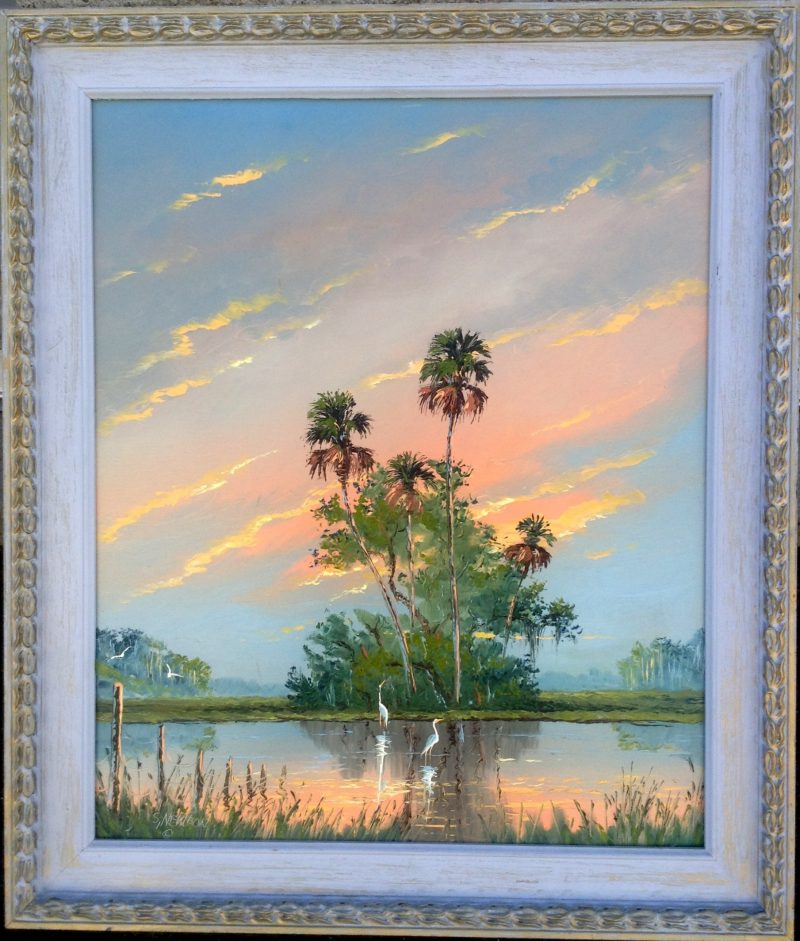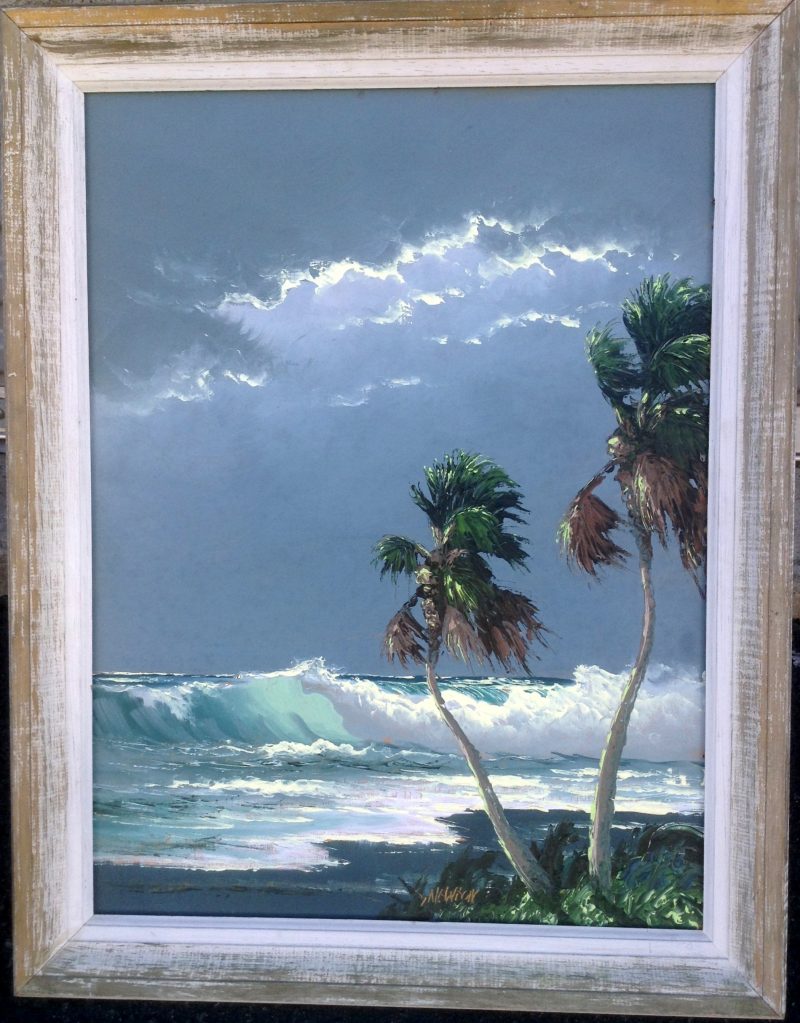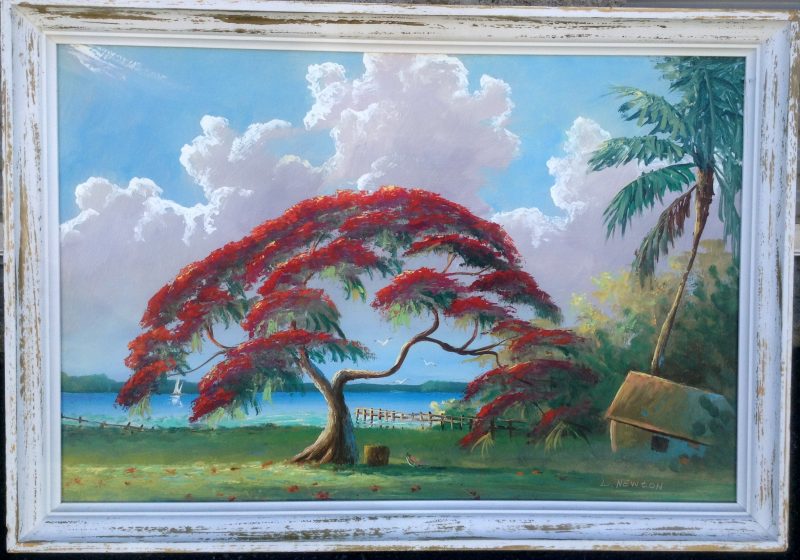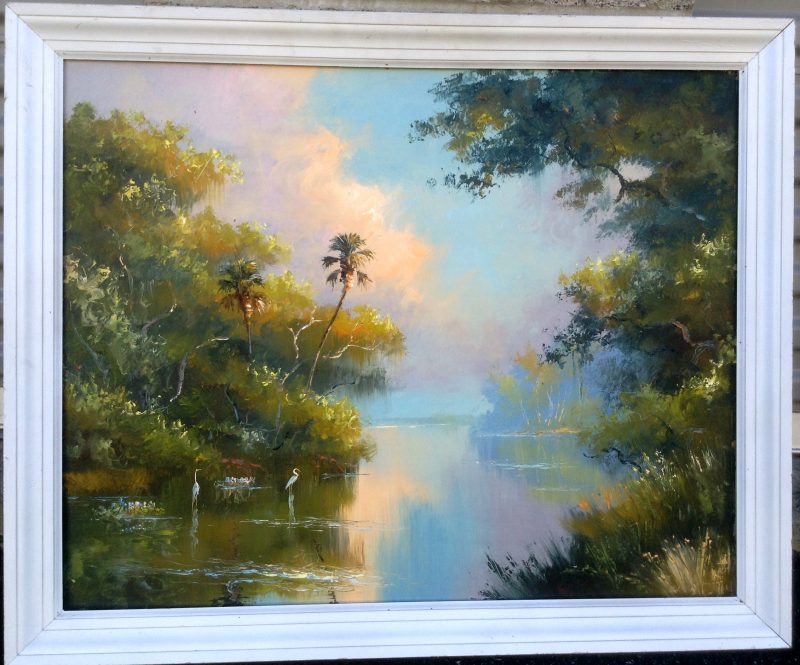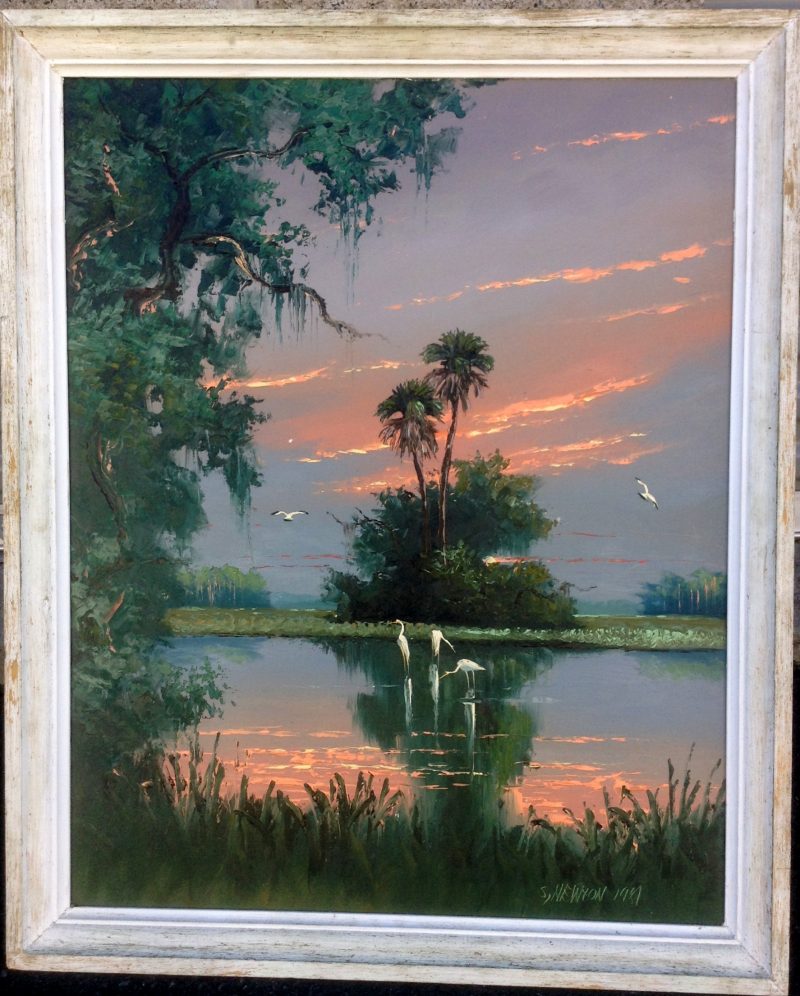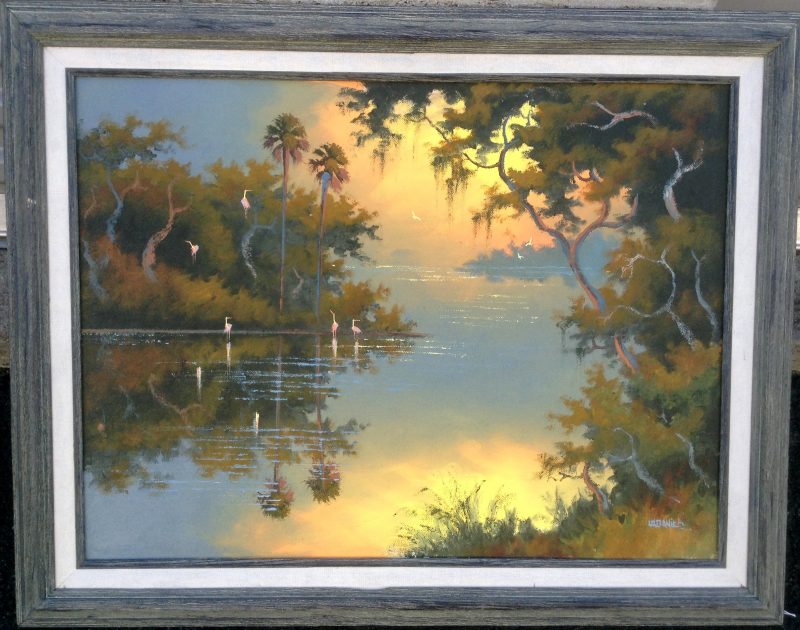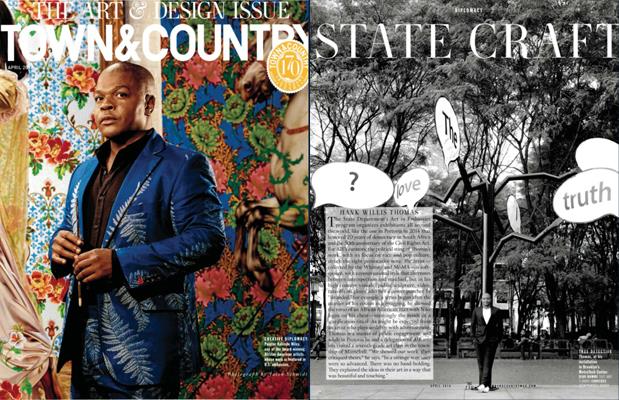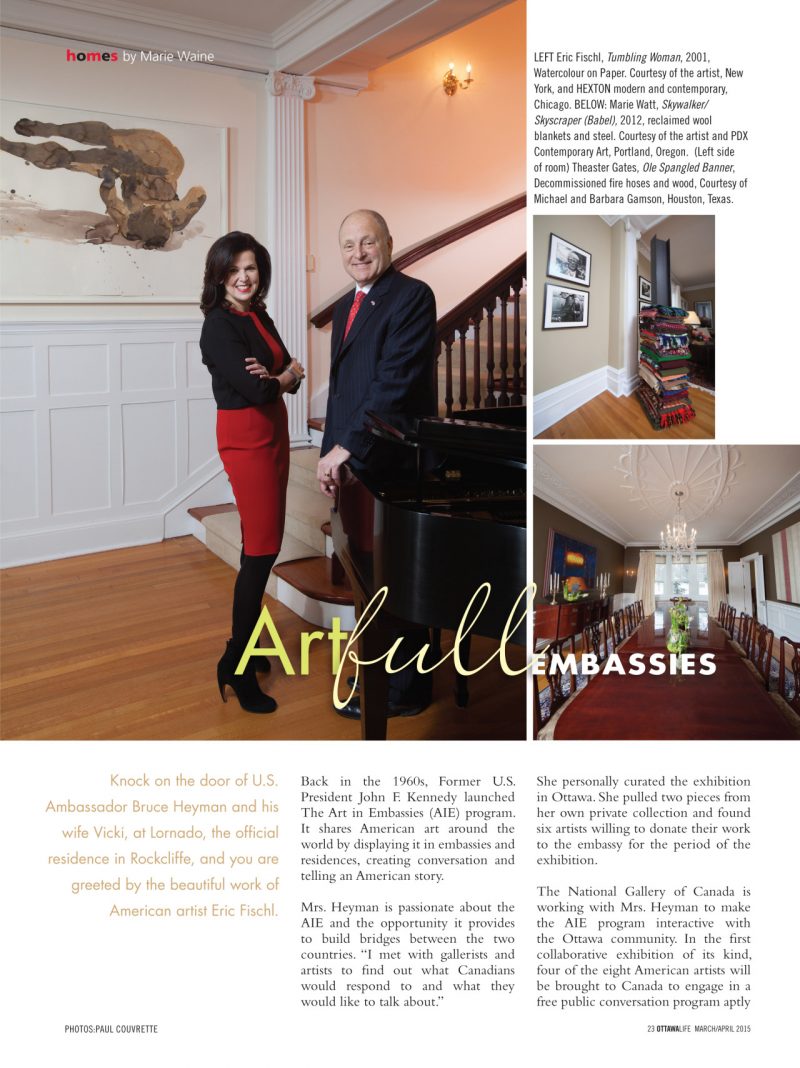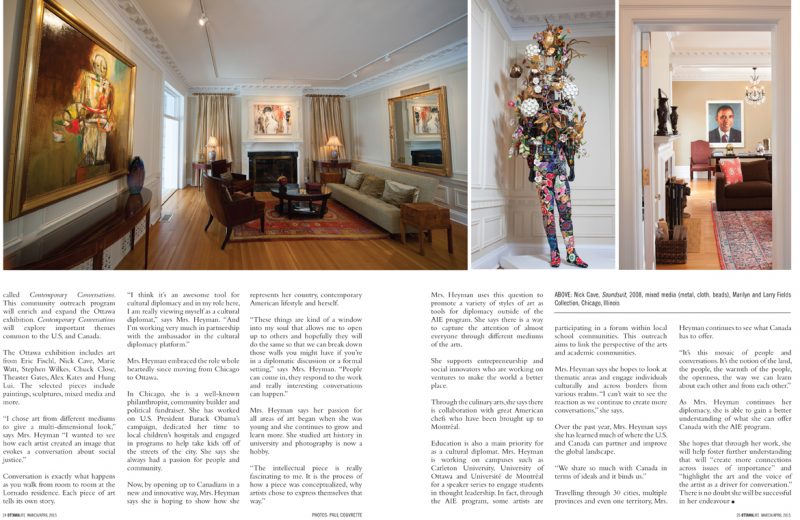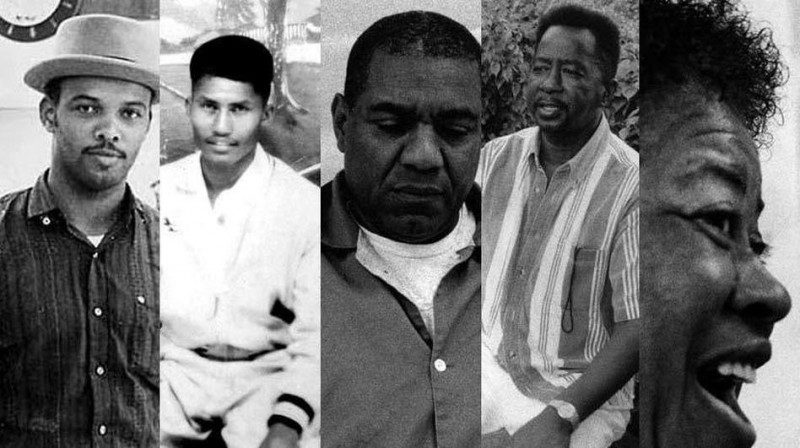Art in Embassies Program 2016/17
LPM Projects is proud to announce its partnership with ‘Art in Embassies’ Program.
Currently on loan: A selection of paintings by “The Florida Highwaymen”.
Special thanks to Tony Hayton for generously lending works from his collection for this exhibition and for his longtime dedication to preserving the Florida Highwaymen’s legacy.
About Art in Embassies
The U.S. Department of State’s office of Art in Embassies (AIE) promotes cross-cultural dialogue through the visual arts by curating permanent art collections for new embassy buildings, sending temporary exhibitions to ambassadors’ residences, and conducting a variety of cultural exchange programs. Since its establishment in 1963, AIE has worked with more than 25,000 participants around the world including artists, museums, galleries, universities, and private collectors. Today, with a presence in over 200 venues spread across 171 different countries, AIE continues to demonstrate how art can transcend national borders, foster mutual understanding, and build enduring connections.
For more information please visit: http://art.state.gov.
Current Press:
http://www.townandcountrymag.com/society/a5399/state-department-artist-portraits/
“STATE CRAFT:
A group of iconoclastic African-American artists are getting their work on walls around the world—and access to an international audience of millions. The radical patron behind it all? The U.S. State Department”. – written by Kevin Conley for Town & Country Magazine
Mission Statement
For five decades, Art in Embassies (AIE) has played a leading role in U.S. public diplomacy through a focused mission of vital cross-cultural dialogue and understanding through the visual arts and dynamic artist exchange. The Museum of Modern Art first envisioned this global visual arts program in 1953, and President John F. Kennedy formalized it at the U.S. Department of State in 1963. Today, AIE is a public-private partnership engaging over 20,000 participants globally, including artists, museums, galleries, universities, and private collectors, and encompasses over 200 venues in 189 countries. Professional curators and registrars create and ship about 60 exhibitions per year, and since 2000, over 58 permanent collections have been installed in the Department’s diplomatic facilities throughout the world.
AIE fosters U.S. relations within local communities world-wide – an integral aspect of Department of State’s commitment to smART power. In the last decade, more than 100 artists have traveled to countries participating in AIE’s exchange programs and collaborated with local artists to produce works now on display in embassies and consulates. Going forward, AIE will continue to engage, educate, and inspire global audiences, showing how art can transcend national borders and build connections among peoples.
To further the mission of the U.S. Department of State for cross-cultural exchange, Art in Embassies’ (AIE) professional curators create temporary exhibitions for American embassy residences and permanent collections for new U.S. embassies and consulates. Art in Embassies works within the Bureau of Overseas Buildings Operations (www.state.gov/obo). The curators cultivate and maintain partnerships with thousands of artists, museums, collectors, universities, galleries, and foundations worldwide, ensuring that the art chosen is compelling, and that the exhibitions and collections are engaging, informative, and relevant for the intended audience, and highlight the cross-cultural exchange mission of the Department.
These exhibitions and collections begin with a study of the host country, involvement in the design of architectural spaces, and review of floor plans to identify potential locations for art installation and collaborative projects. The exhibitions and collections include site specific commissions by American and host country artists, and original works of art which compliment the architecture and interior design of the designated representational spaces, creating work environments that foster dialogue and provide platforms for cultural outreach. Other considerations shape the selection as well, as the art has to be compatible with the mores and cultural heritage of the host country and reflect the artistic range, similarities and differences, and cultural and aesthetic values of both countries. Multi-lingual labels, publications and other documentation, and exchange programming provide context for both exhibitions and collections, offerings insight into the motivation behind the artists’ work.
To further the mission of the US Department of State, Art in Embassies (AIE) operates within a framework of six regions: Africa, the Near East, Europe and Eurasia, Western Hemisphere, East Asia and the Pacific, and South and Central Asia. AIE staff curate temporary exhibitions for US Ambassadors’ residences and permanent collections for new US embassies within each region. Our team of professional curators cultivates and maintains partnerships with thousands of artists, museums, collectors, universities, galleries and foundations worldwide, to ensure that artists are compelling and the exhibitions/collections are engaging, informative, and relevant for the intended audience.
The exhibitions and collections begin with study of the host country, involvement in space design, and/or review of the floor plans identifying potential art locations and collaborative projects.
The exhibitions and collections include original works of art by US and host country artists, which complement the architecture and interior design of the designated representational spaces. Other considerations shape the selection as well. The choice of art has to be compatible with the values of the host country and reflect the artistic range and cultural values of both countries. The work has to be transportable, and the site has to be secure. Multi-lingual documentation provides context for both exhibitions and collections, offerings insight into the artists’ motivation for their work.
Art in Embassies covers the cost of crating, shipping, installation and insurance for both exhibitions and collections. A registrar professionally trained in the field of fine art handling, logistics and conservation works in tandem with each curator to arrange for pickup, consolidation, and delivery. Every step of the way, careful consideration is given to handling and maintaining the artwork.
“For fifty years, Art in Embassies has played an active diplomatic role by creating meaningful cultural exchange through the visual arts. The exhibitions, permanent collections and artist exchanges connect people from the farthest corners of an international community. Extending our reach, amplifying our voice, and demonstrating our inclusiveness are strategic imperatives for America.
Art in Embassies cultivates relationships that transcend boundaries, building trust, mutual respect and understanding among peoples. It is a fulcrum of America’s global leadership as we continue to work for freedom, human rights and peace around the world.”
U.S. Secretary of State – John Forbes Kerry
MORE:
The Highwaymen first began painting Florida Landscapes in 1954. America was struggling to put a rocket into space, the national highway system was still two years away and Florida was a very young and undeveloped state. Racism, prejudice and harsh Jim Crow segregationist laws meant that African Americans were treated as second class citizens. Opportunities were few, and higher education and advancement were denied to most. Life offered hard menial work in hot agriculture fields. African Americans were subjected to hatred, racism, segregation and violence. That year, the Civil Rights Movement in the south was just beginning.
Emerging against this backdrop, in the small east coast town of Fort Pierce, was a group of young African American landscape artists. Several of them had had some formal art training in High School, but most were self taught. They mentored each other and honed their skills. They developed ingenious “fast” painting techniques to increase productivity. Improvising to save costs, they used construction materials, “upson” wallboard for their “canvas” and window casing for frames.
Racism and prejudice closed the doors of art galleries as none would represent African American artists, that was the domain of white artists only. So they improvised to make their sales. They visited businesses, offices and homes to sell their art door to door and out of the trunks of their vehicles. Often these works were freshly painted and still wet. They took to the roads and the highways. In 1995, white art historian Jim Fitch began to research stories of a group of African American artists painting landscapes in the Fort Pierce area. He named the group, branding them the “Highwaymen.” Astonishingly, it took 40 years after they had begun painting for them to become recognized as an art group!
In 2004, the State of Florida inducted all 26 Highwaymen painters into the Florida Artists Hall of Fame, along with the likes of Ernest Hemingway, Ray Charles and Tennessee Williams. Estimates are that they created 250,000 to 400,000 works of art! Many of the surviving artists are still painting for a living. Two generations of Highwaymen offspring and countless others now paint “in their style”. They continue to defy categorization and time. Respect is slow to come, yet with such a huge body of work over more than half a century of time they meet all the criteria of an art movement. In fact, it has been said that the Florida Highwaymen are the most significant American Art Movement of the last half of the 20th Century. Yet sadly, these artists have not yet been fully recognized for who they are or what they did. Few outside the state of Florida have heard of them. Only recently has their epic saga been recognized as a unique but untold Civil Rights Story.
Their legacy is a massive body of work that captures a dreamlike primordial Florida landscape dominated by pristine wetlands, fecund forests and splendorous skies. It is a Florida that no longer exists, lost to development, tourism, and concrete. However, their artwork stands through time as a statement of environmental protection, self determination and human rights.
The Passion:
My adventures began with the Florida Highwaymen in 2001, while searching for some iconic Florida art, I found a painting online that reached out to me, it was a sun-drenched sandy beach, with crashing surf, tall billowing clouds, wafting palms and soaring birds. I thought, that’s exactly what I was looking for. It said “Florida Highwaymen” so I began to research the painting’s history and became “instantly hooked” on the story of this group of African American painters from Fort Pierce, Fla., who had defied social convention to sell their art as an alternative to working in Florida’s citrus groves. I thought “This is like the Group of Seven in Canada but instead of seven white guys mentoring each other and painting the wilds of Canada, this is 26 black artists mentoring each other and painting the wilds of Florida. I was hooked!
The commonality to the Group of 7 intrigued me, and the art was fascinating. The story was romantic, poignant and inspiring, Over time I ended up with a significant collection of Highwaymen paintings. But I needed to ask myself what was I, as a Canadian, doing with all of this American art? I had lent it to many exhibits in Florida but I was living in Canada and had no intention of bringing the art north. I considered it an important part of American History and Culture. It really made no sense to have this collection sitting in storage. That to me was wrong, the art and the story needed to be shared. It needed to be on exhibit. I felt that underlying this was also an untold Civil Rights. The story that needed to be told outside of Florida. The artists were getting older and dying off. I felt their story needed to be told by the artists while they were still alive. I took up the cause to get involved and share the art and help get these artists known and appreciated outside of Florida.
I chose to move my collection to Washington, I felt that was as a good as place as any to raise the group’s awareness. There I found an ally at Florida House, an embassy on Capital Hill, for a state instead of a country. They agreed to showcase my Highwaymen artwork. Since then I have spent the last decade trying to exhibit the collection in the United States. Being out of the country has not helped. I had limited success in spreading the word. As an “unconnected” Canadian living north of the border I was having a difficult and challenging time “shedding light on this part of American History and Culture”.
I had just about given up on my quest, and then one day last year the U.S. Embassy in Canada became aware of my collection and my efforts, and agreed to bring the paintings to Canada. In 2016, under the auspices of Vicki Heyman, the wife of Bruce Heyman, the U.S. ambassador to Canada, the art crossed the border north into Canada. Mrs. Heyman, was a keen supporter of the arts and facilitated cross-border artistic exchanges while she was in Canada. She says “the Highwaymen’s story addresses issues such as social justice, race, environment and identity.” She believes the paintings constitute an art movement, although “not the kind of art movement the art society would necessarily accept.” The U.S, Embassy helped to mount 3 exhibits in Ottawa, Montreal and Windsor, which all received rave reviews and critical acclaim.
The Highwaymen art in this exhibit will be departing Canada this year as it heads back to the U.S. It had arrived in Canada as part of a cultural mission for the U.S. Embassy in Ottawa, and the Montreal U.S. Consulate. The Windsor exhibit and now the upcoming Toronto exhibit have been self funded. The upcoming Toronto Black History Month exhibit will be important, being that it is in Canada’s cultural centre, but also extra special, as famed Highwaywoman artist Mary Ann Carroll will be present for the exhibit’s opening night events. She will be flying in specially from Florida to attend the festivities, share her stories and meet with exhibit attendees. The exhibit will be at Daniels Spectrum at 585 Dundas Street East in the Regent Park neighbourhood.
